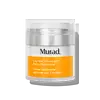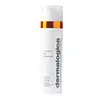What's inside
What's inside
 Key Ingredients
Key Ingredients

 Benefits
Benefits

 Concerns
Concerns

 Ingredients Side-by-side
Ingredients Side-by-side

Water
Skin ConditioningGlycerin
HumectantShea Butter Ethyl Esters
EmollientDicaprylyl Carbonate
EmollientIsodecyl Neopentanoate
EmollientJojoba Esters
EmollientGlyceryl Stearate Citrate
EmollientSynthetic Beeswax
Emulsion StabilisingDimethicone
EmollientHydrogenated Palm Kernel Glycerides
EmollientEctoin
Skin ConditioningMarrubium Vulgare Extract
Skin ConditioningAllantoin
Skin ConditioningZingiber Officinale Root Extract
MaskingBrassica Campestris Sterols
EmollientHydrolyzed Jojoba Esters
Skin ConditioningTetrahexyldecyl Ascorbate
AntioxidantHordeum Vulgare Extract
EmollientCucumis Sativus Fruit Extract
EmollientHelianthus Annuus Seed Extract
Skin ConditioningUrea
BufferingYeast Amino Acids
HumectantTrehalose
HumectantInositol
HumectantTaurine
BufferingBetaine
HumectantBisabolol
MaskingHydroxyphenyl Propamidobenzoic Acid
Skin ConditioningHydrogenated Palm Glycerides
EmollientXanthan Gum
EmulsifyingPropylene Glycol Dicaprate
EmollientAcrylates/C10-30 Alkyl Acrylate Crosspolymer
Emulsion StabilisingHexyldecanol
EmollientPentylene Glycol
Skin Conditioning4-T-Butylcyclohexanol
MaskingCetylhydroxyproline Palmitamide
Skin ConditioningStearic Acid
CleansingDisodium Carboxyethyl Siliconate
Skin ConditioningAminomethyl Propanol
BufferingDisodium EDTA
Ethylhexylglycerin
Skin ConditioningPhenoxyethanol
PreservativeParfum
MaskingLimonene
PerfumingLinalool
PerfumingBenzyl Salicylate
PerfumingCI 77891
Cosmetic ColorantWater, Glycerin, Shea Butter Ethyl Esters, Dicaprylyl Carbonate, Isodecyl Neopentanoate, Jojoba Esters, Glyceryl Stearate Citrate, Synthetic Beeswax, Dimethicone, Hydrogenated Palm Kernel Glycerides, Ectoin, Marrubium Vulgare Extract, Allantoin, Zingiber Officinale Root Extract, Brassica Campestris Sterols, Hydrolyzed Jojoba Esters, Tetrahexyldecyl Ascorbate, Hordeum Vulgare Extract, Cucumis Sativus Fruit Extract, Helianthus Annuus Seed Extract, Urea, Yeast Amino Acids, Trehalose, Inositol, Taurine, Betaine, Bisabolol, Hydroxyphenyl Propamidobenzoic Acid, Hydrogenated Palm Glycerides, Xanthan Gum, Propylene Glycol Dicaprate, Acrylates/C10-30 Alkyl Acrylate Crosspolymer, Hexyldecanol, Pentylene Glycol, 4-T-Butylcyclohexanol, Cetylhydroxyproline Palmitamide, Stearic Acid, Disodium Carboxyethyl Siliconate, Aminomethyl Propanol, Disodium EDTA, Ethylhexylglycerin, Phenoxyethanol, Parfum, Limonene, Linalool, Benzyl Salicylate, CI 77891
Water
Skin ConditioningGlycerin
HumectantSqualane
EmollientPropanediol
SolventButylene Glycol
HumectantPPG-24-Glycereth-24
EmulsifyingJojoba Wax PEG-120 Esters
Hydroxyethyl Urea
HumectantTrehalose
HumectantAminopropyl Ascorbyl Phosphate
AntioxidantAllantoin
Skin ConditioningHyaluronic Acid
HumectantHydrolyzed Hyaluronic Acid
HumectantHydrolyzed Jojoba Esters
Skin ConditioningBiosaccharide Gum-1
HumectantEthylhexylglycerin
Skin ConditioningSodium PCA
HumectantSodium Levulinate
Skin ConditioningErgothioneine
AntioxidantBeta-Carotene
Skin ConditioningLactobacillus Ferment
Skin ConditioningAloe Barbadensis Leaf Juice
Skin ConditioningCamellia Sinensis Leaf Extract
AntimicrobialCentella Asiatica Extract
CleansingChamomilla Recutita Flower Extract
MaskingGlycyrrhiza Glabra Root Extract
BleachingVerbascum Thapsus Extract
Skin ConditioningLactobacillus/Pumpkin Ferment Extract
Skin ConditioningGlycine Soja Oil
EmollientCitrus Aurantium Dulcis Peel Extract
Emulsion StabilisingCitrus Paradisi Peel Oil
MaskingHelianthus Annuus Seed Oil
EmollientCitrus Aurantium Bergamia Fruit Oil
MaskingRaspberry Ketone
MaskingJasminum Sambac Flower Extract
MaskingSantalum Album Oil
MaskingDaucus Carota Sativa Root Extract
Skin ConditioningBisabolol
MaskingCystine
MaskingGlycine
BufferingDipotassium Glycyrrhizate
HumectantHydrolyzed Glycosaminoglycans
HumectantSodium Hyaluronate Crosspolymer
HumectantSodium Hyaluronate
HumectantPentylene Glycol
Skin ConditioningCaprylyl Glycol
EmollientTocopherol
AntioxidantMannitol
HumectantTetrasodium Glutamate Diacetate
Sodium Hydroxide
BufferingPhytic Acid
Citric Acid
BufferingPEG-40 Hydrogenated Castor Oil
EmulsifyingC12-13 Pareth-3
EmulsifyingXanthan Gum
EmulsifyingSclerotium Gum
Emulsion StabilisingPolyacrylate Crosspolymer-6
Emulsion StabilisingAscorbyl Methylsilanol Pectinate
AntioxidantGlyceryl Caprylate
EmollientP-Anisic Acid
MaskingBenzyl Glycol
SolventMethylpropanediol
SolventSodium Benzoate
MaskingPotassium Sorbate
PreservativeLimonene
PerfumingWater, Glycerin, Squalane, Propanediol, Butylene Glycol, PPG-24-Glycereth-24, Jojoba Wax PEG-120 Esters, Hydroxyethyl Urea, Trehalose, Aminopropyl Ascorbyl Phosphate, Allantoin, Hyaluronic Acid, Hydrolyzed Hyaluronic Acid, Hydrolyzed Jojoba Esters, Biosaccharide Gum-1, Ethylhexylglycerin, Sodium PCA, Sodium Levulinate, Ergothioneine, Beta-Carotene, Lactobacillus Ferment, Aloe Barbadensis Leaf Juice, Camellia Sinensis Leaf Extract, Centella Asiatica Extract, Chamomilla Recutita Flower Extract, Glycyrrhiza Glabra Root Extract, Verbascum Thapsus Extract, Lactobacillus/Pumpkin Ferment Extract, Glycine Soja Oil, Citrus Aurantium Dulcis Peel Extract, Citrus Paradisi Peel Oil, Helianthus Annuus Seed Oil, Citrus Aurantium Bergamia Fruit Oil, Raspberry Ketone, Jasminum Sambac Flower Extract, Santalum Album Oil, Daucus Carota Sativa Root Extract, Bisabolol, Cystine, Glycine, Dipotassium Glycyrrhizate, Hydrolyzed Glycosaminoglycans, Sodium Hyaluronate Crosspolymer, Sodium Hyaluronate, Pentylene Glycol, Caprylyl Glycol, Tocopherol, Mannitol, Tetrasodium Glutamate Diacetate, Sodium Hydroxide, Phytic Acid, Citric Acid, PEG-40 Hydrogenated Castor Oil, C12-13 Pareth-3, Xanthan Gum, Sclerotium Gum, Polyacrylate Crosspolymer-6, Ascorbyl Methylsilanol Pectinate, Glyceryl Caprylate, P-Anisic Acid, Benzyl Glycol, Methylpropanediol, Sodium Benzoate, Potassium Sorbate, Limonene
 Reviews
Reviews

Alternatives
Ingredients Explained
These ingredients are found in both products.
Ingredients higher up in an ingredient list are typically present in a larger amount.
Allantoin is a soothing ingredient known for its protective and moisturizingg properties. Because of this, it is often added to products with strong active ingredients.
Studies show higher concentrations of this ingredient can promote wound healing.
Though it can be derived from the comfrey plant, allantoin is produced synthetically for cosmetic products to ensure purity.
Learn more about AllantoinBisabolol is famous for its skin soothing properties. It does this by blocking inflammatory signals, helping to reduce your body's reaction to irritation.
This ingredient also interferes with the process of hyperpigmentation. This can help with reducing dark spots and uneven tone.
Bisabolol is an antioxidant. Antioxidants help fight free-radicals. Free-radicals are molecules that may damage your skin cells. By fighting these free-radicals, Bisabolol may slow down signs of aging.
Studies have shown Bisabolol to have antimicrobial properties and may be a fungicide. These properties help preserve a product's shelf life.
All these properties makes bisabolol a great skin barrier helper ingredient.
Bisabolol also helps the absorption of other ingredients.
Note: Synthetic Bisabolol has been shown to be less effective.
Learn more about BisabololEthylhexylglycerin (we can't pronounce this either) is commonly used as a preservative and skin softener. It is derived from glyceryl.
You might see Ethylhexylglycerin often paired with other preservatives such as phenoxyethanol. Ethylhexylglycerin has been found to increase the effectiveness of these other preservatives.
Glycerin is already naturally found in your skin. It helps moisturize and protect your skin.
A study from 2016 found glycerin to be more effective as a humectant than AHAs and hyaluronic acid.
As a humectant, it helps the skin stay hydrated by pulling moisture to your skin. The low molecular weight of glycerin allows it to pull moisture into the deeper layers of your skin.
Hydrated skin improves your skin barrier; Your skin barrier helps protect against irritants and bacteria.
Glycerin has also been found to have antimicrobial and antiviral properties. Due to these properties, glycerin is often used in wound and burn treatments.
In cosmetics, glycerin is usually derived from plants such as soybean or palm. However, it can also be sourced from animals, such as tallow or animal fat.
This ingredient is organic, colorless, odorless, and non-toxic.
Glycerin is the name for this ingredient in American English. British English uses Glycerol/Glycerine.
Learn more about GlycerinThis ingredient is created by cleaving jojoba oil to remove all fatty acids, fatty alcohols, and wax esters.
Hydrolyzed Jojoba Esters has emollient, stabilizing, and hair-conditioning properties.
Limonene is a fragrance that adds scent and taste to a formulation.
It's found in the peel oil of citrus fruits and other plants such as lavender and eucalyptus. The scent of limonene is generally described as "sweet citrus".
Limonene acts as an antioxidant, meaning it helps neutralize free radicals.
When exposed to air, oxidized limonene may sensitize the skin. Because of this, limonene is often avoided by people with sensitive skin.
The term 'fragrance' is not regulated in many countries. In many cases, it is up to the brand to define this term. For instance, many brands choose to label themselves as "fragrance-free" because they are not using synthetic fragrances. However, their products may still contain ingredients such as essential oils that are considered a fragrance.
Learn more about LimonenePentylene glycol is typically used within a product to thicken it. It also adds a smooth, soft, and moisturizing feel to the product. It is naturally found in plants such as sugar beets.
The hydrophilic trait of Pentylene Glycol makes it a humectant. As a humectant, Pentylene Glycol helps draw moisture from the air to your skin. This can help keep your skin hydrated.
This property also makes Pentylene Glycol a great texture enhancer. It can also help thicken or stabilize a product.
Pentylene Glycol also acts as a mild preservative and helps to keep a product microbe-free.
Some people may experience mild eye and skin irritation from Pentylene Glycol. We always recommend speaking with a professional about using this ingredient in your routine.
Pentylene Glycol has a low molecular weight and is part of the 1,2-glycol family.
Learn more about Pentylene GlycolTrehalose is a disaccharide made of two glucose molecules (glucose is sugar!). Trehalose is used to help moisturize skin. It also has antioxidant properties.
As a humectant, trehalose helps draw moisture from the air to your skin. This helps keep your skin hydrated.
Due to its antioxidant properties, trehalose may help with signs of aging. Antioxidants help fight free-radical molecules, unstable molecules that may damage your skin.
In medicine, trehalose and hyaluronic acid are used to help treat dry eyes.
Some animals, plants, and bacteria create trehalose as a source of energy to survive freeze or lack of water.
Learn more about TrehaloseWater. It's the most common cosmetic ingredient of all. You'll usually see it at the top of ingredient lists, meaning that it makes up the largest part of the product.
So why is it so popular? Water most often acts as a solvent - this means that it helps dissolve other ingredients into the formulation.
You'll also recognize water as that liquid we all need to stay alive. If you see this, drink a glass of water. Stay hydrated!
Learn more about WaterXanthan gum is used as a stabilizer and thickener within cosmetic products. It helps give products a sticky, thick feeling - preventing them from being too runny.
On the technical side of things, xanthan gum is a polysaccharide - a combination consisting of multiple sugar molecules bonded together.
Xanthan gum is a pretty common and great ingredient. It is a natural, non-toxic, non-irritating ingredient that is also commonly used in food products.
Learn more about Xanthan Gum